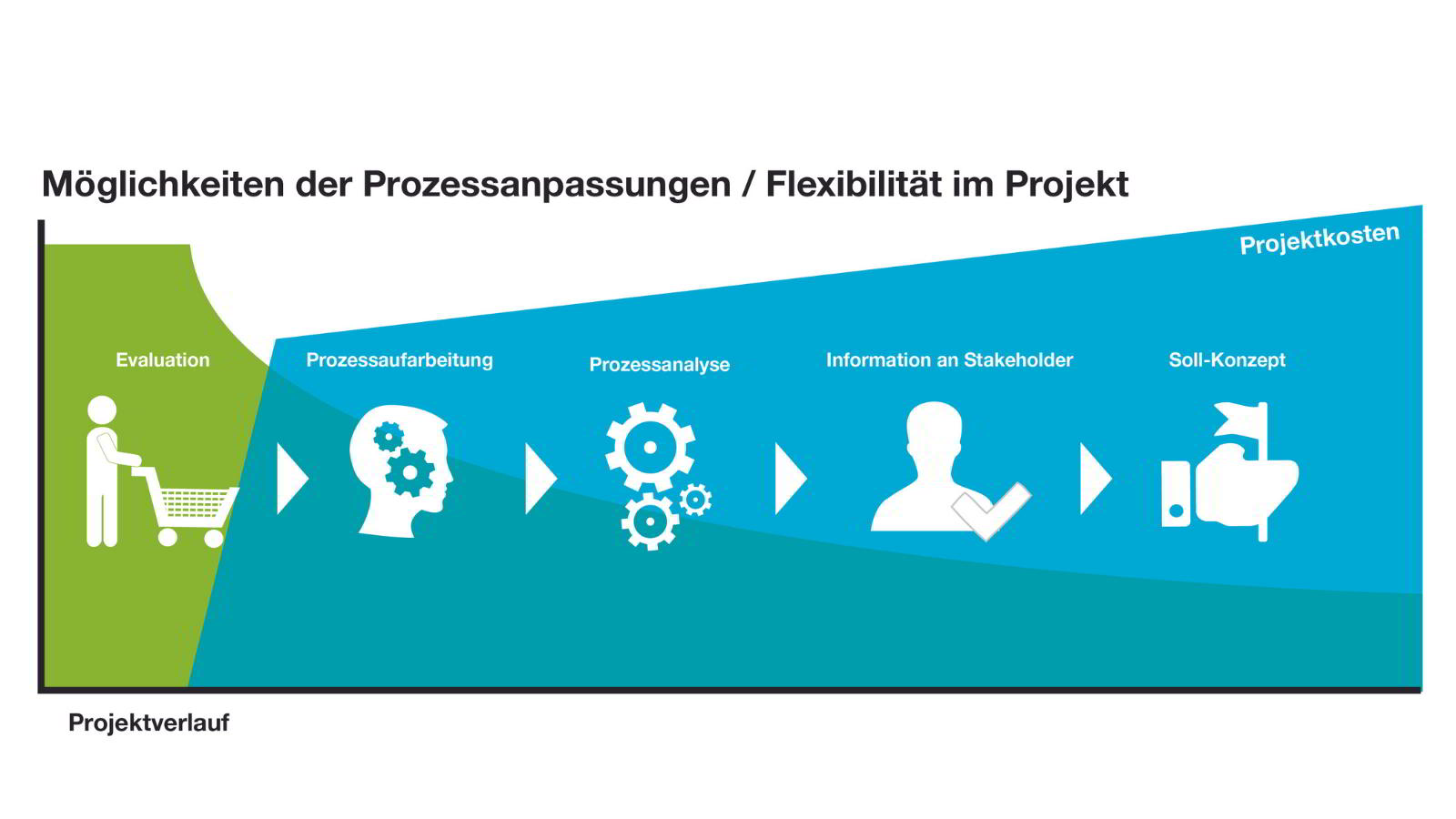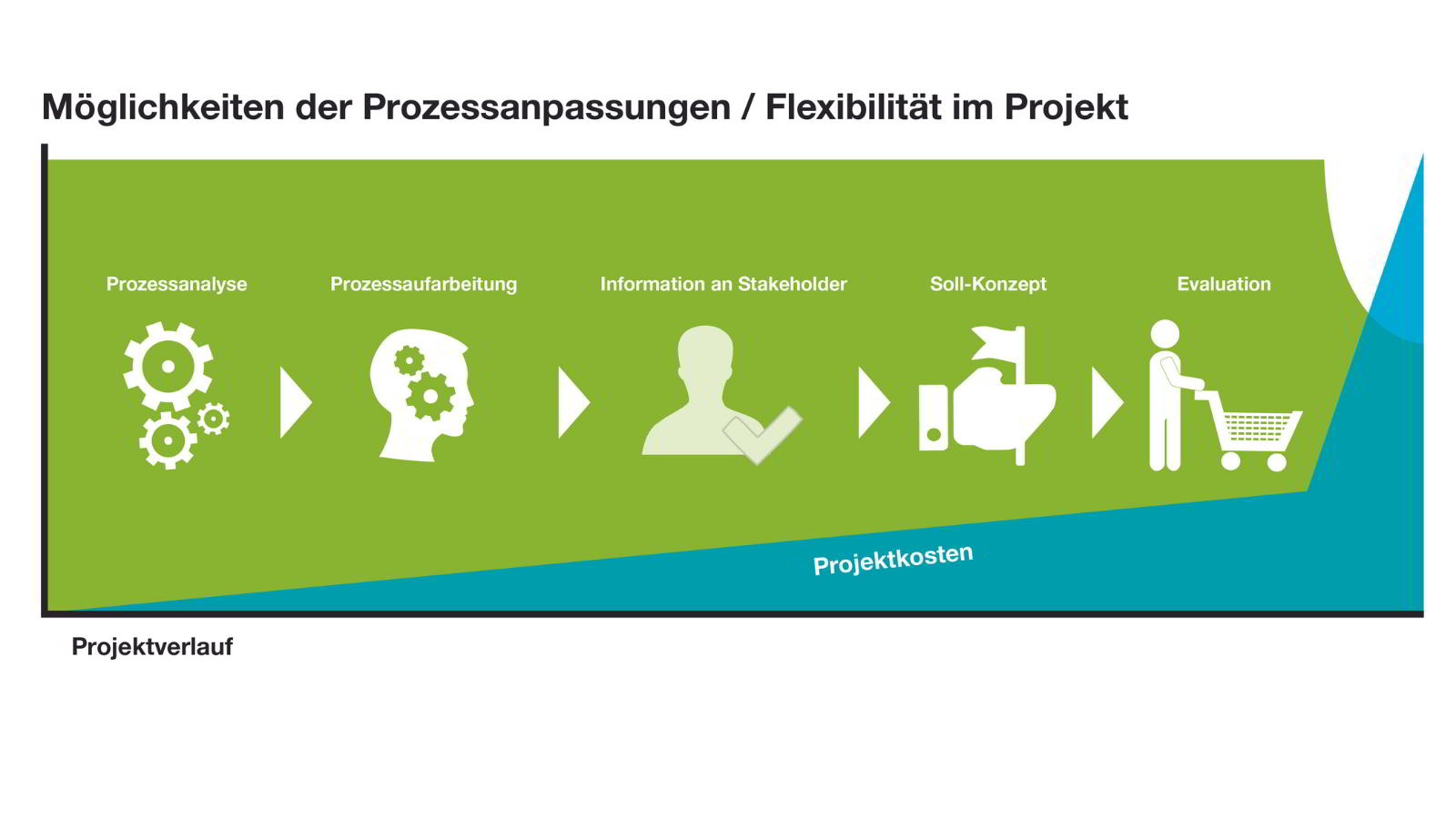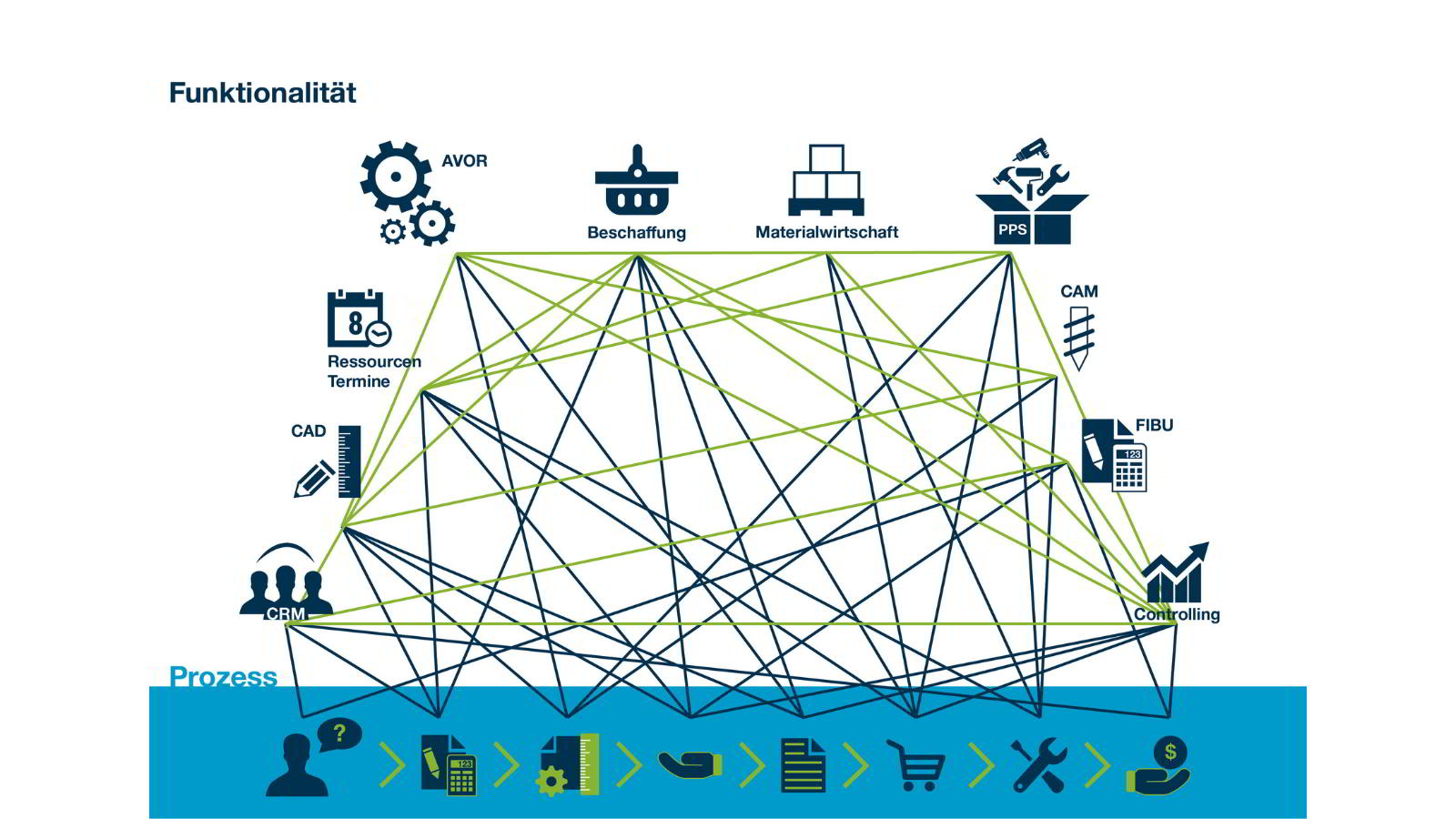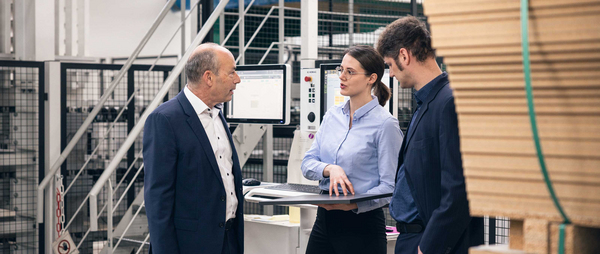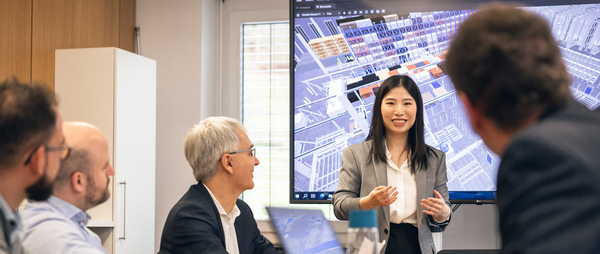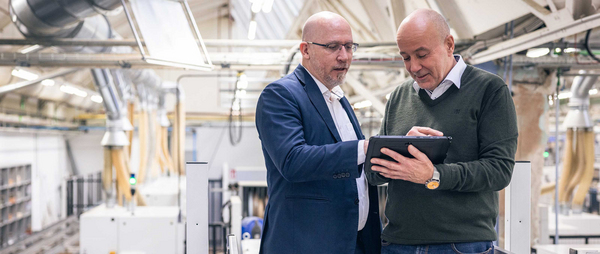
How do I find the right software for my company? Which software covers all business needs? How can I map my processes digitally? How much training do my employees need? And how do I identify today which processes will still be relevant tomorrow?
Questions upon questions. Finding the right software is complex for any company, large or small, and not done with a quick internet search. In this article, software consultants Klaus Fickler and Luca Föhn from SCHULER Consulting explain what SMEs and industrial manufacturers need to consider when evaluating software.
Software controls processes, processes data, enriches them with information and filters out what is relevant. Software transforms input into output, communicates with other systems and changes processes. Software is never just a programme for the digital processing of manual work steps: Its implementation involves financial and personnel investments and risks, and its selection must be made carefully - a strategic decision. Just as the acquisition of a new machine often leads to a change in the processes in the entire production, the integration of a new software into the existing software landscape of a company has an impact on the upstream and downstream processes and systems. At the latest when it is used by the employees, it becomes clear that software never stands alone.
Step by step to the right software
Finding the right software is achieved through a detailed selection process, which at best incorporates industry knowledge, technical know-how and a sound knowledge of the market. The following applies: What I implement today will determine my processes tomorrow. The reasons for new software can be manifold: The current software is outdated, new products streamline workflows or include new features that can do even more, the company has grown and activities that were previously done manually now need to be done more digitally and faster. Regardless of which software is to be implemented in a company, in a software project with Schuler Consulting this follows a tried and tested procedure.
Step 1: Visualisation of the current situation and potential analysis
The first step in every software project is the analysis of the current situation. First, the project team, consisting of the client and the consultant, defines which processes are involved and visualises the present process landscape, including the strengths and weaknesses of the existing software. Together they conduct a potential analysis and determine the requirements for the new software and the client's objectives regarding the development of his company. Where should the company be in five years? What is the importance of service? Are changes planned with regard to sales channels (B2B, B2C, webshop)? These and other questions are discussed by the project team with the client. Furthermore, in the potential analysis they take into account the effects of the software project on the company philosophy and possible changes at the process level. Through the visualisation of an ideal business process, the client can state exactly what their objectives are. The foundation for the software selection is thus laid.
Step 2: Draw up specifications
In the second step, the project team draws up the specifications in order to define the customer's requirements more precisely on a technical and functional level: What must the new software be able to do to meet my requirements as a customer? What are optional functionalities, what are mandatory functionalities that I cannot do without? At the end of this project step, the specifications contain all the necessary "hard facts". This includes information on computers, databases, networks, customising options and much more. Not only must the consultant's technical knowledge flow into the creation of the specifications, but also his concentrated industry know-how.
Step 3: Vendor research and invitation to tender
This is followed by the consultant's research into providers: Which suitable providers are there on the market? In addition to the "hard facts", the potential software supplier's knowledge and experience in project management are required, such as their solution competence and their references ("soft facts"). Last but not least, the cost framework and licensing are relevant. This raises the question of which licensing model is the most suitable for use in the company. Increasingly, cloud-based rental models (XaaS, SaaS, PaaS, IaaS, etc.) are conquering the software market, which can often convince with usage-based billing models and thus offer flexible entry options for companies. After the pre-selection by the consultant, the specifications are sent to the software providers for response. The software providers fill out the specifications and indicate whether they can implement the requirements in full, in part or through external third-party providers. Then the tender goes into the next phase.
Step 4: Evaluation of the providers
Together with the client, the completed specifications are evaluated. Those providers who can already convince here are invited by the company to a presentation. The presentation, on site or digitally, makes it possible to get a better impression of the potential software supplier and to evaluate not only the "hard facts" but also the "soft facts". In addition, open questions can be clarified directly here, which means that in addition to the personal first impression, the presentation of the supplier can also prove its consulting and solution competence.
Step 5: Selecting the provider and concluding the contract
In the end, the decision is made in favour of a candidate. Schuler Consulting then accompanies its client until the contract is signed and, if desired, also during the implementation phase to further ensure that the goals associated with the new software are also achieved.
The foundation of software selection: The specifications
The requirements specification is of central importance in software selection (see step 2). The creation of a specification is like the creation of a complex timber construction or the production of a sophisticated piece of furniture: without prior knowledge of materials and processes, the base of the piece of furniture will be crooked and the foundation of the wooden house will be unstable. Everything that is subsequently built on top of it will not be any better. A specification is a specific summary of future business processes and thus lays the foundation for software selection and subsequent implementation. Implementing new software in a production context always involves changes in the vertical and horizontal processes. However, unlike in timber construction or furniture design, where even an untrained eye can detect misalignments, such errors in the software project may only become visible during implementation.
The central role of the specifications is often still not given enough attention in the wood and furniture industry. A specification must be written as precisely as possible. It must give a software supplier freedom to implement, but no room for interpretation. In order to prevent this, the author of the specifications must have sound market and technology know-how so that the complexity of the processes and their interrelationships are understood. Without this clear basis for evaluation, one runs the risk of completely losing one's bearings in an already complex topic.
Mastering the software selection. Recommendations for...
...small and medium-sized enterprises
At the beginning of a software project - whether with or without a consultant and regardless of the size of the company - it is advisable not to rigidly limit the scope of the project at first. Always consider the company processes as a whole to prevent isolated solutions from solving a specific problem but creating new problems in the context of an overall process.
Especially for SMEs, the earlier employees are involved in the software selection process, the better! The experience of employees is particularly important in process design. They provide the realistic input about the actual flow of the processes and are thus the process owners. Open and continuous communication is essential here. Consequently, when selecting the software, also think about the future users: your employees.
Often, SMEs proceed to clarification with the software supplier without a well-founded process review. This often results in two paths: The best sales presentation of the supplier is ordered. The central challenges are not discussed until the financial framework conditions are fixed. This way, surprises are guaranteed in the project. The other way is that the company cannot get a real picture of any of the variants offered, because it simply does not yet have a real goal with the software project. The goal, that is, the creation and establishment of this vision, is an essential part of a software selection. Create the vision specifically and on the basis of the process work-up. Make sure that your goal is clear to all employees.
Last but not least, an assessment of the soft and hard facts is relevant. The decision for new software is always long-term. Accordingly, the contact with the software supplier is designed for the long term. So it is not only the price that should be right, but also the chemistry.
...for industrial manufacturers
As an industrial manufacturer, you know the situation: if something is wrong with the material flow, it is hard to miss. For example, jams form in production where there shouldn't be any, or in other places parts have to be produced in excess. Depending on the problem, the cause of the error can be quickly eliminated. When mapping an information flow, however, errors are less obvious. Here, explicit research is needed to uncover the challenges in a process. Often, one discovers processes that have not been running optimally for years, but were never properly recognised because they did not appear obviously in the problem definition.
There is enormous potential for optimisation, especially in administrative processes. The work processes in a company are usually shaped and limited by the software landscape. Due to these limitations, employees create workarounds to complete their tasks with the help of manual overrides. This can be a clue for you: Already during the ACTUAL analysis, ask your employees when they prefer manual workarounds to a digital solution. This gives you clues to identify potential problems with the current software and can reveal optimisation potential further down the line.
Particularly in larger companies, many processes have "matured" internally within departments and without overarching consideration of other departments. In addition, it is highly likely that some processes are simply shaped by time and are no longer up to date. Through a precise analysis and reappraisal, enormous process steps that no longer add value can be eliminated from these "invisible" processes. Our recommendation: At the beginning of the software project, consider which departments will be directly or indirectly affected by the new software. How does the connection to upstream and downstream processes work?
A process change, especially in combination with a software change, leads to fundamental changes in the way employees work. This change must therefore be communicated at an early stage and coordinated accordingly so that it is handled in cooperation with the employees. One success factor here is to achieve a "collective will" with regard to the software change. This factor may prove to be idealistic in some places - ultimately, a software project stands and falls with the acceptance and implementation of the employees. The following applies to SMEs and industry: involve your employees right from the start!
Thinking about tomorrow today - that's how it works!
A special requirement with regard to the wood industry is the complexity of the orders. There are not only five parts with a delivery date behind an order - there is a whole or at least half a value chain hidden here. This fact must not be forgotten, whether SME or industrial manufacturer, when selecting software. For this reason in particular, details such as flexible edge information on the component must be carefully considered not only at one point in the process, but generally during information generation, processing and transfer, for example to the machine. Think about the complexity of your processes and plan enough time for a software project!
Essential in a software selection is not to try to fix the previous processes or even the previous challenges with a new software. A digital process is an interaction between software, people and organisation. These factors must be coordinated with each other. The software is a digital representation of these processes, the provision of which is sometimes the task of your software supplier. From the company's point of view, the focus should therefore always be on its own processes. Define your processes in the software project with foresight and restructure them if necessary. The choice of software is always a strategic decision: Therefore, consider at which point you should adapt your company processes.
The complexity and the necessary steps for a successful software evaluation are well known to us as consultants from the wood and furniture industry. For more than 60 years, the wood and furniture industry has been our home: we know your challenges and support you from project definition to implementation. Regardless of who accompanies you in your next software project: When putting together your project team, pay attention to the expertise, technical know-how and sound industry and market knowledge of the team members. We wish you every success in your software selection!
Authors: Klaus Fickler (Software Consulting), Luca Föhn (Software Consulting)

